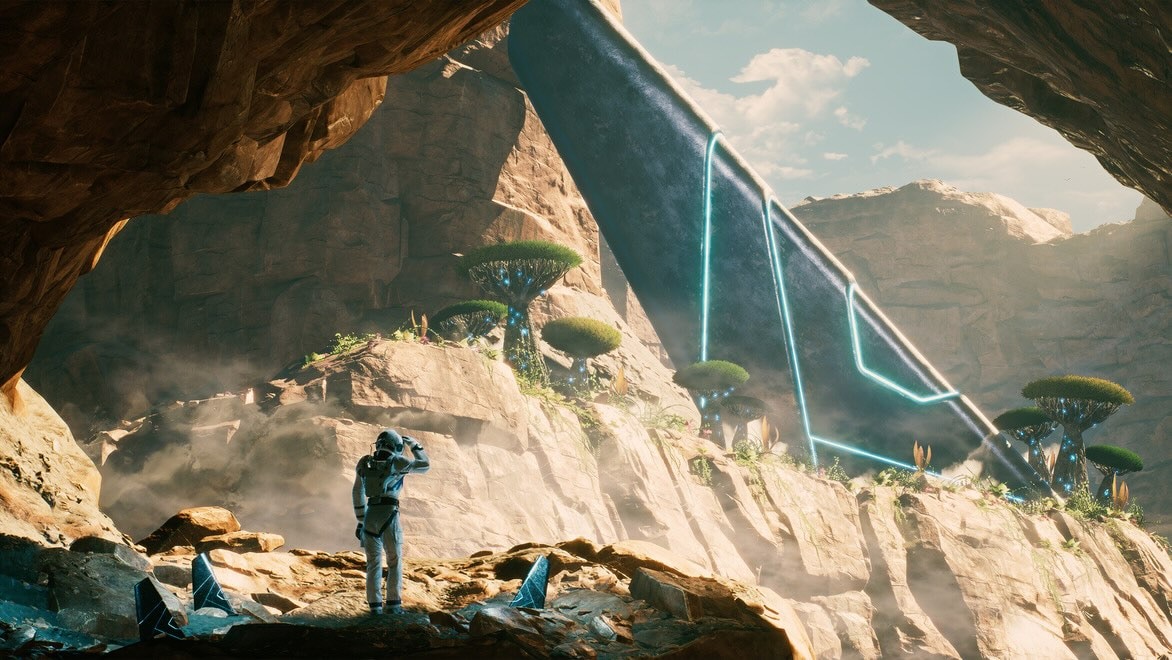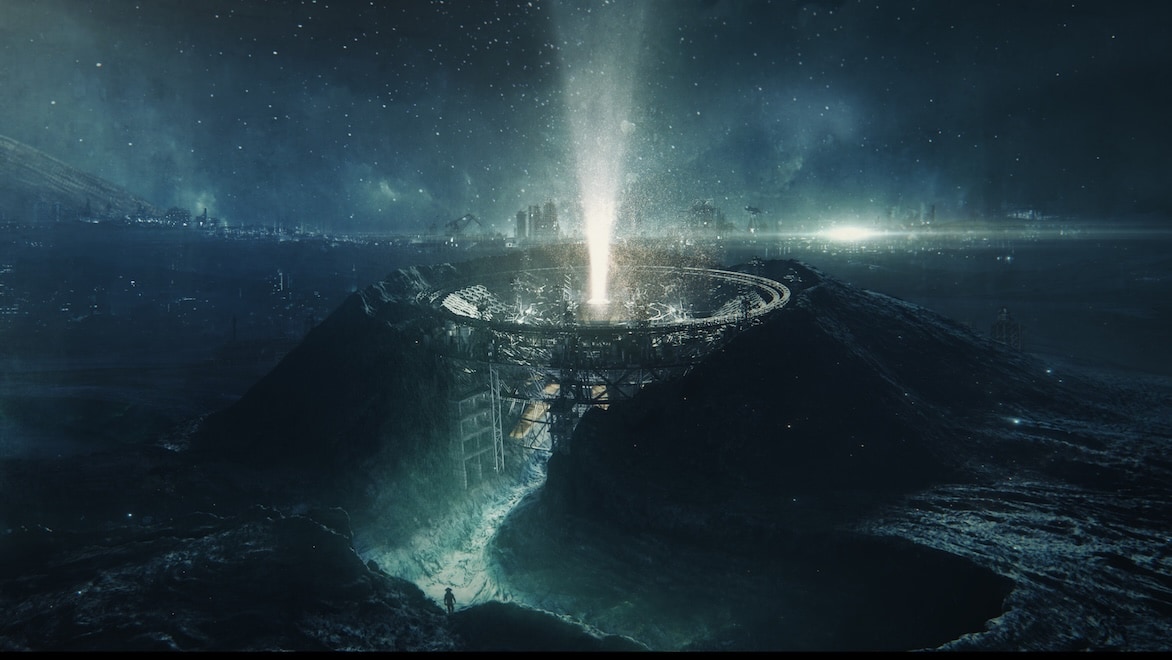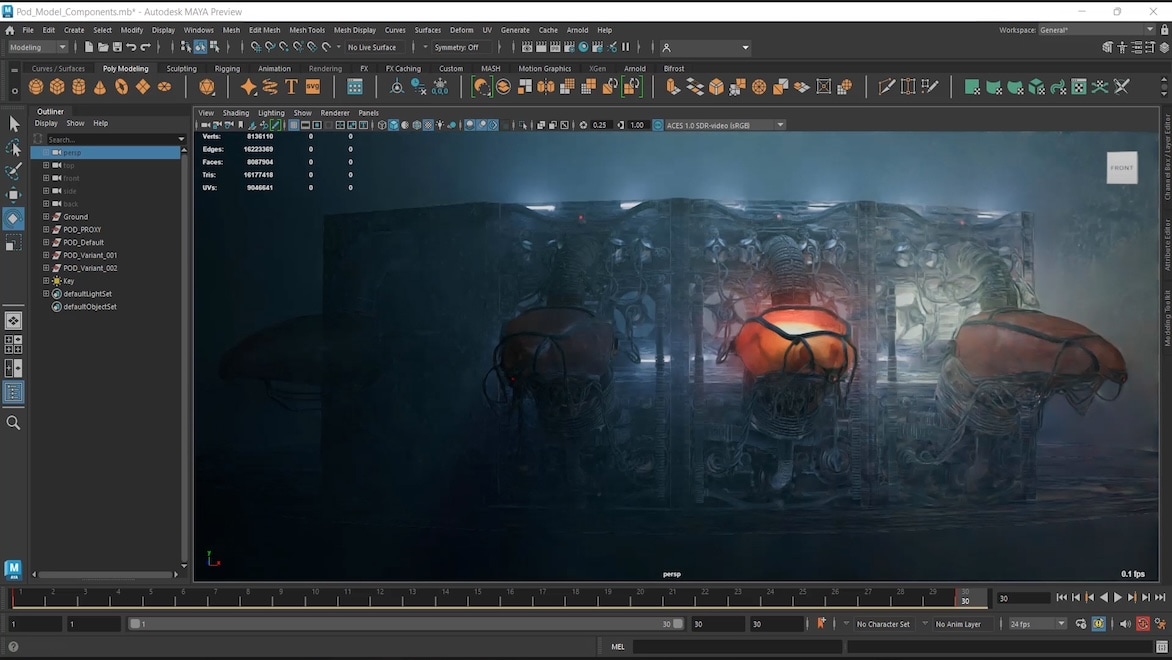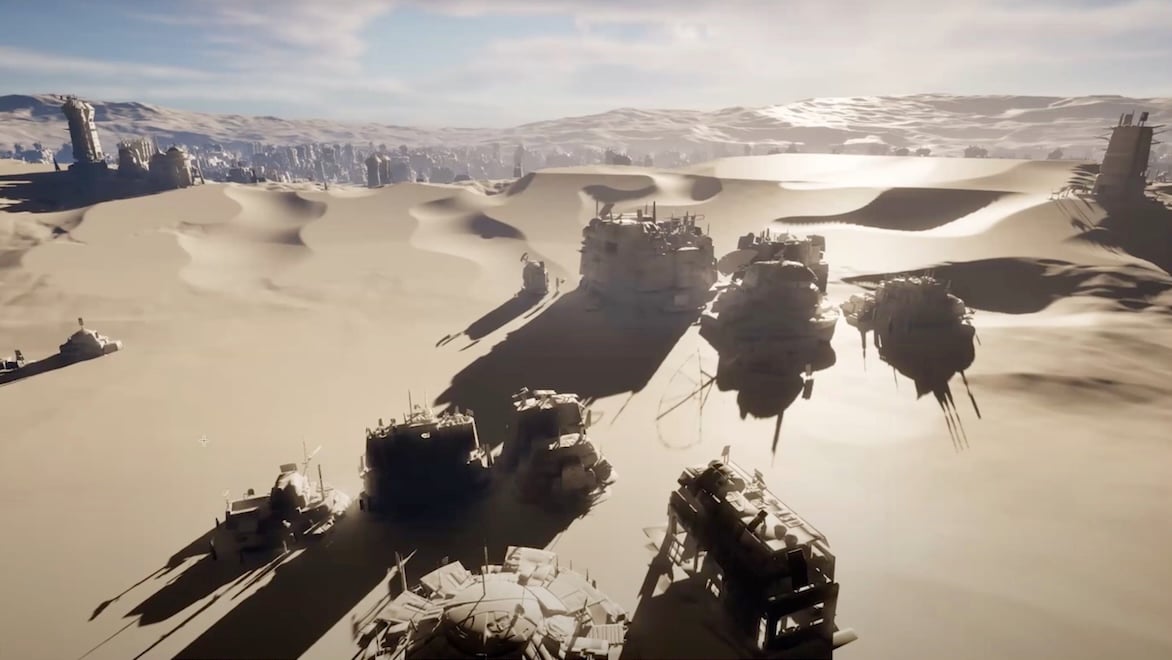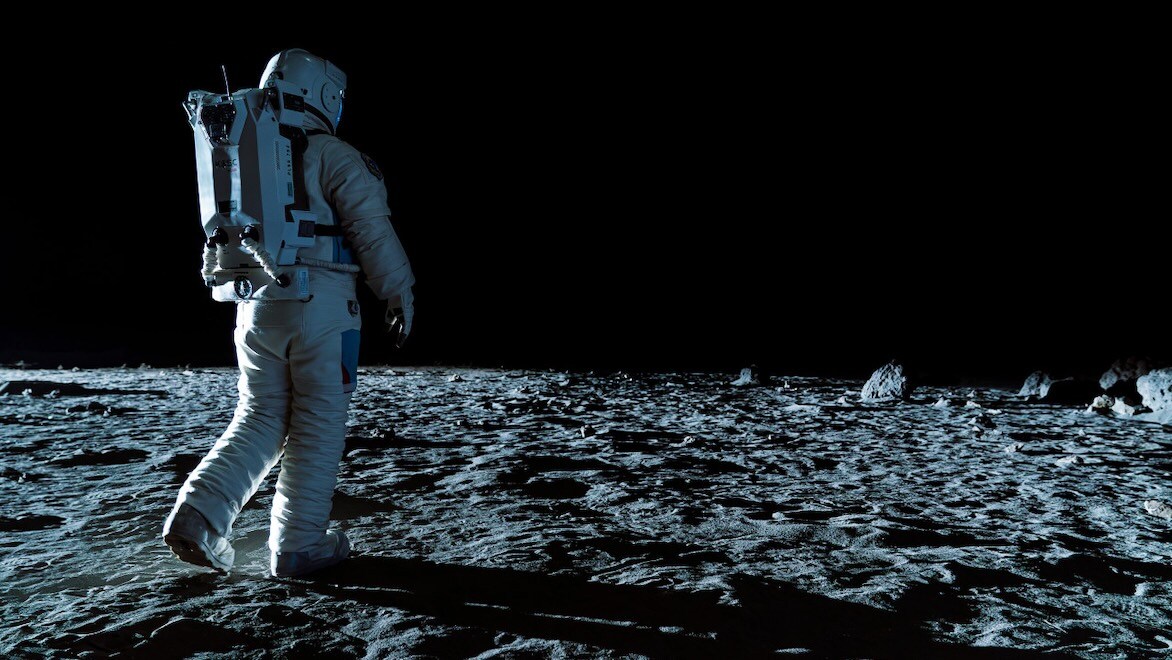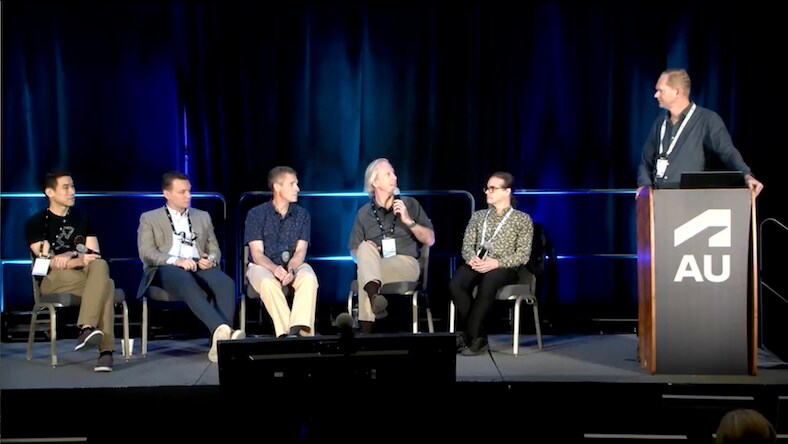& Construction

Integrated BIM tools, including Revit, AutoCAD, and Civil 3D
& Manufacturing

Professional CAD/CAM tools built on Inventor and AutoCAD
Universal Scene Description, now known as OpenUSD, is the most robust open-source software for data interchange within 3D scenes. This highly collaborative system can contain many asset sources and is becoming the standard for 3D visual media production, architecture, design, manufacturing, and other industries.
Animation, visual effects (VFX), and game studios have struggled for decades with poor interoperability among tools in their production pipelines. It was challenging to move data from one place to another, so studios built elaborate pipelines to manage data interoperability, often including custom-made tools.
Even Pixar experienced problems with the interchange of data between different applications. After Pixar’s 2012 movie Brave, the studio decided that its scene descriptions had become so complex that it needed a real solution. That year, Pixar invented Universal Scene Description (USD) to deal with the overwhelming complexity of having too many different APIs and file formats within the 3D visualization pipeline. In 2016, Pixar released USD as open-source code so it could become a standard for the VFX and animation industries. Pixar realized that all studios had the same problem with complexity management, and by making Universal Scene Description open-source, it would be an extensible format that other parties could improve, sharing the benefits with everyone.
OpenUSD solves several workflow and complexity challenges for creating 3D scenes. As an open-source standard, OpenUSD provides an extensible common language that’s interoperable between compatible software tools and platforms. Its system of layered data allows non-destructive editing for easy collaboration. Multiple artists can work on the same asset at the same time using USD’s versioning features to merge everyone’s work. OpenUSD can also provide fast access to enormous datasets, which enables real-time playback and the ability to edit complex scenes interactively.
One major benefit of OpenUSD is that it’s system-agnostic, so you can use it with ease across multiple platforms and programs. But how does USD work with solutions like Maya and 3ds Max?
Integration is easy with the open-source USD for Maya extension and USD for 3ds Max extension. These extensions allow everyone involved in the production process to work seamlessly within Maya, 3ds Max, and other USD software as needed.
As with OpenUSD itself, the code for the USD for Maya and USD for 3ds Max plugins is open-source and constantly evolving and improving. Users can directly contribute to the code for these plugins on GitHub.
The Alliance for OpenUSD (AOUSD), formed in 2023 by Pixar, Apple, Adobe, Autodesk, and NVIDIA, in conjunction with the Joint Development Foundation, fosters the continued development, evolution, and standardization of OpenUSD to make large-scale 3D projects more manageable, efficient, and creatively ambitious.
As more organizations work to advance OpenUSD, everyone who uses it can take advantage of the collective progress. For example, Autodesk Maya’s USD plug-in is based on the open-source plug-ins that both Pixar and Animal Logic originally wrote to use USD for Maya. And in turn, Autodesk has also made its Maya USD plug-in an open-source project. In recent years, Autodesk has integrated OpenUSD workflows into more content creation tools, including 3ds Max, Arnold, and Bifrost for Maya.
Whereas other file formats are flat and don’t allow for multiple components of the same scene, USD scene description is comprised of multiple layers, which is one of its true strengths. This makes it possible to:
Different assets—such as a landscape feature, a 3D character, a light source, or anything else—are added to the scene in separate, independent but connected layers, fostering a dynamic and collaborative postproduction working environment where creativity can thrive.
Layers can be easily combined and ordered in OpenUSD according to the requirements of the scene, so you can experiment to make it match your vision.
One of the most useful aspects of OpenUSD is that it is non-destructive. This means that multiple people can work on the same scene simultaneously without disrupting each other. Effectively, you can make edits and alterations to the files, and they won’t affect anyone else’s work unless they choose to include the modified files in their iteration. For more information on how OpenUSD workflows work, including a live demo, check out our webinar, Cracking the Case on OpenUSD: How to Achieve Glorious 3D Interoperability.
Scale your studio’s rendering and simulation capabilities, while equipping artists with powerful modeling and animation tools
Exchange USD 3D scene data between different software and tools seamlessly with Universal Scene Description’s common language and file format, designed for interoperability.
The USD software ecosystem is as extensible as the 3D worlds animators create with it. APIs can modify the framework’s simulation, rendering, collaboration, editing, composing, and other functions.
The layering system within USD software allows non-destructive data editing, which makes collaboration between artists and studios more rewarding and less risky.
The Alliance for OpenUSD brings together top industry partners Pixar, Adobe, Apple, NVIDIA, and Autodesk. Many other leading companies are joining to make OpenUSD the industry standard.
Universal Scene Description’s asset resolver is file-system agnostic. It helps organize, manage, and quickly access digital assets regardless of the data storage model or data sources used.
USD’s Hydra rendering architecture provides visualization flexibility by working with custom-made and third-party renderer plug-ins, which several vendors have written.
OpenUSD workflows can make VFX more efficient in time and cost. Dexter Studios, a Seoul-based digital production company, has used Universal Scene Description to make their workflows flow more smoothly. By integrating OpenUSD into their virtual production pipelines, they have produced world-class visuals in short postproduction periods. You can find out more in this video on Harnessing OpenUSD and virtual production for efficiency.
Qvisten Animation
Discover how Qvisten Animation used Autodesk Design & Make to create an OpenUSD asset pipeline, streamline workflows, and future-proof their studio.
Image courtesy of Qvisten Animation
AU 2024
Hear from a panel of technical visionaries as they explore the role of Universal Scene Description (OpenUSD) in fostering open data exchange—not just in media and entertainment, but across industries.
Fin Design + Effects
In this SIGGRAPH Session, hear how Fin Design + Effects used open standards like OpenUSD alongside Autodesk Flow Production Tracking and Maya to accelerate a major motion picture film project, The Creator.
Image courtesy of Fin Design + Effects
Get the details on AOUSD, the alliance of Adobe, Apple, Autodesk, NVIDIA, and Pixar to promote USD’s standardization, development, and evolution.
Create an OpenUSD model, edit a USD layer, save USD data, and more with Maya’s USD integration.
Hear from chief members of the AOUSD about how USD began and learn about its future in promoting interoperability across 3D ecosystems.
Use OpenUSD across Maya’s toolset to store, edit, and export complex asset data like modeling, materials, lighting, and shading variations in a single USD container.
OpenUSD organizes a 3D scene into a hierarchy of prims (objects/elements), which have attributes (properties/characteristics) associated with them. Universal Scene Description also uses multiple layers of scene data, each layer with its own prims, attributes, and overrides, which modify specific prims and attributes without altering their original data. Variants and variant sets allow for multiple representations of the same object or scene.
The textual USD Stage Description (USD Stage) language describes scene hierarchy and properties in plain text files.
Overall, OpenUSD is an efficient way to edit and collaborate on 3D scene data across production pipelines and has become standardized with native support within leading software.
There are many advantages to using Universal Scene Description (USD) 3D software for managing scene data. First is interoperability—USD was made to exchange 3D scene data between different software and platforms using a common language and file format.
Universal Scene Description’s layering system sets up two big advantages: non-destructive editing, which makes it easier for artists to experiment and modify scene data without risk and scalability, where artists can work on separate scene layers and efficiently manage complex scenes without duplicating tons of data.
Other USD advantages include versioning and collaboration features, performance and efficiency, flexibility, and wide industry support.
